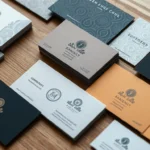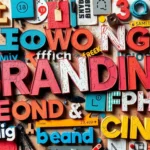Ever wondered how filmmakers turn a script into a visual wonder? The answer is storyboarding. This key step in filmmaking connects dreams with reality, making abstract ideas into real scenes.
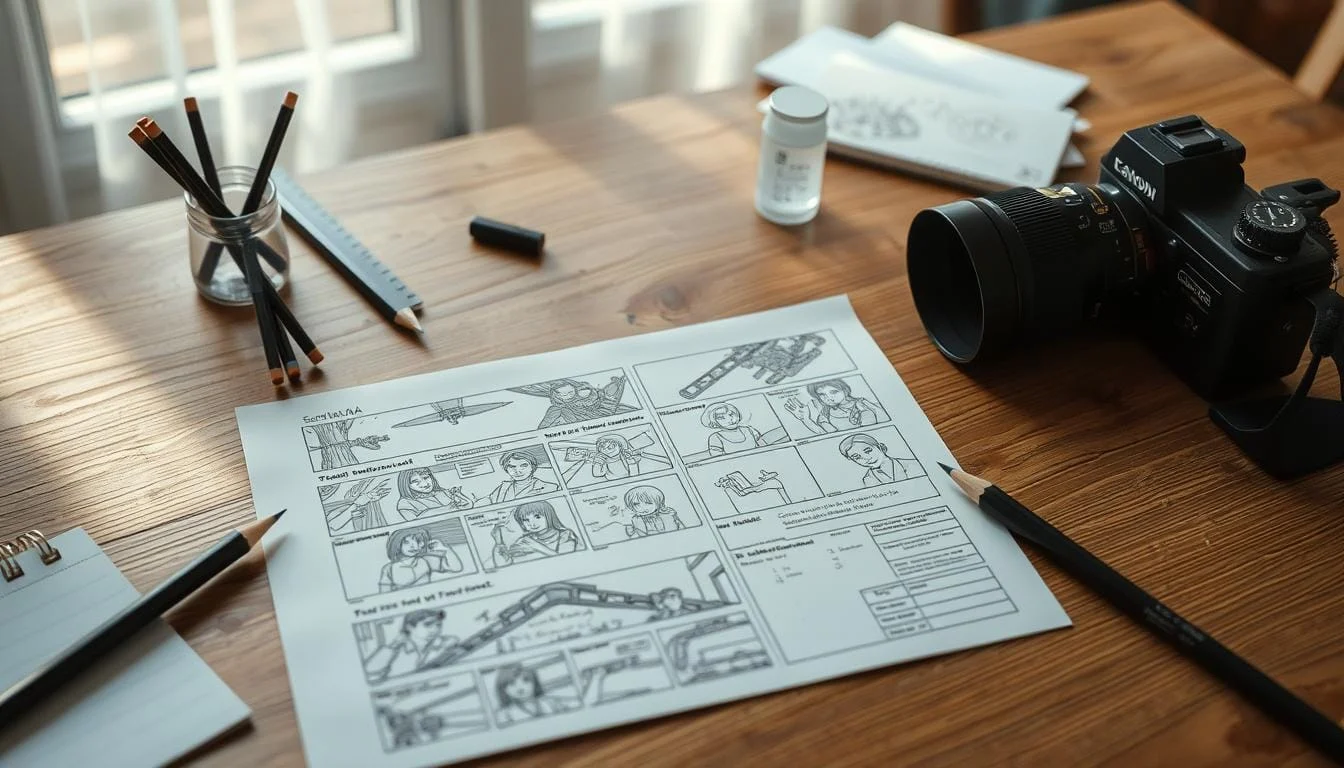
Storyboarding is more than just drawing scenes. It’s a way to bring your script to life. By making a series of drawings or images for each shot, you’re setting the stage for your film. This method helps you see your story and guides your crew, making sure everyone is in sync.
The role of storyboarding in pre-production is huge. It’s a tool for breaking down scripts, planning shots, and solving problems before filming starts. In fact, studies show projects with storyboards finish up to 30% faster than those without.
Want to make your vision real? Think about hiring a pro storyboard artist. They can turn your script into a visual guide. Check out Fiverr for talented artists and elevate your filmmaking.
Key Takeaways
- Storyboarding transforms scripts into visual scenes
- It’s a key pre-production tool in filmmaking
- Helps with script breakdown and shot planning
- Improves team communication and alignment
- Increases on-time delivery rates by up to 30%
- Essential for effective visual storytelling
The Evolution and History of Storyboarding
Storyboarding has a long history, starting in animation studios. It has changed the way movies are made. Let’s see how it evolved from its early days to today’s filmmaking.
Origins in Animation Studios
The story of storyboarding began in the 1930s at Walt Disney’s studio. By 1938, all major animation studios in America used it. They saw its value in planning before production.
From Walt Disney to Modern Cinema
Soon, storyboarding moved to live-action films. By 1939, it was used in movies like “Gone with the Wind.” This film set a new standard in visual storytelling.
Notable Historical Examples
From the 1940s to the 1990s, storyboarding became key in film production. Famous storyboard artists worked with directors. They helped bring their ideas to life before filming.
| Year | Milestone |
|---|---|
| 1930s | Walt Disney studio develops modern storyboarding |
| 1938 | Storyboarding spreads to most US animation studios |
| 1939 | “Gone with the Wind” uses storyboards extensively |
| 1940s-1990s | Storyboarding widely adopted in production design |
| 2024 | Over 50,000 users sign up for StoryTribe, a modern storyboarding tool |
Today, storyboarding is used in many areas, not just movies. It’s used in TV, business, education, and design. Need help with your project? Consider hiring a professional storyboard artist.
Understanding the Fundamentals of Storyboards in Film Production
Storyboards turn written stories into pictures, showing how scenes will look on screen. They break down scenes into panels, shot by shot. This helps plan every part of your film.

Shot composition is key in storyboarding. You sketch each frame, thinking about camera angles and character positions. This makes your story clearer and more emotional.
Camera movements are important too. Your storyboard should show zooms, pans, and other movements. These shots make scenes more interesting and guide the viewer’s eyes.
“Storyboarding can help save time. It may take a while initially, but it will save time in revisions later on.”
The scene sequence in your storyboard makes production smoother. Planning each shot saves time and effort during filming. It also helps everyone understand your vision and work together better.
Don’t worry about making your drawings perfect. Clarity and communication are more important. Many filmmakers use simple drawings to get their ideas across. If drawing isn’t your thing, you can hire a professional storyboard artist on Fiverr to help.
- Use traditional detailed sketches or thumbnail style for quick ideas
- Include shot numbers, actions, dialogue, and technical aspects
- Consider aspect ratios for different platforms (e.g., 16:9 for films, custom for social media)
By learning these basics, you’ll make storyboards that help your team understand your script. This ensures your story is brought to life on screen.
Why Are Storyboards Important?
Storyboards are key in filmmaking, bringing many benefits to the production process. They are vital for making film projects successful.
Visual Communication Tool
Storyboards act as a strong pre-visualization tool. They connect the script to the screen. They turn written ideas into pictures, helping everyone understand the director’s vision.
In fact, 80% of people get ideas better with visual tools like storyboards.

Pre-Production Planning
In pre-production, storyboards are very useful. They help plan shots and figure out what equipment is needed. They also spot possible problems before filming starts.
This planning makes productions smoother. 95% of filmmakers say storyboards improve communication and coordination.
Cost and Time Efficiency
Storyboards make production more efficient. They outline every shot, making a clear plan for filming. This leads to a 30% boost in shoot efficiency.
Companies also see a 20% cut in editing time and fewer revisions with detailed storyboards.
| Benefit | Impact |
|---|---|
| Increased Efficiency | 30% improvement in shoot efficiency |
| Time Savings | 20% reduction in editing time |
| Project Success Rate | 50% higher for complex projects |
Using storyboards can make your production smoother and lead to better results. Need help with storyboards? Find skilled artists to make your vision come to life.
Essential Elements of an Effective Storyboard
Creating a strong storyboard is vital for telling a story visually. It acts as a guide for your camera work and shapes the flow of scenes. Let’s explore the key parts that make a storyboard effective.
Shot Composition
Your storyboard should clearly show how each shot is framed. This includes where characters are placed, what’s in the background, and what’s the main focus. Good shot composition sets the mood and helps show feelings without words.
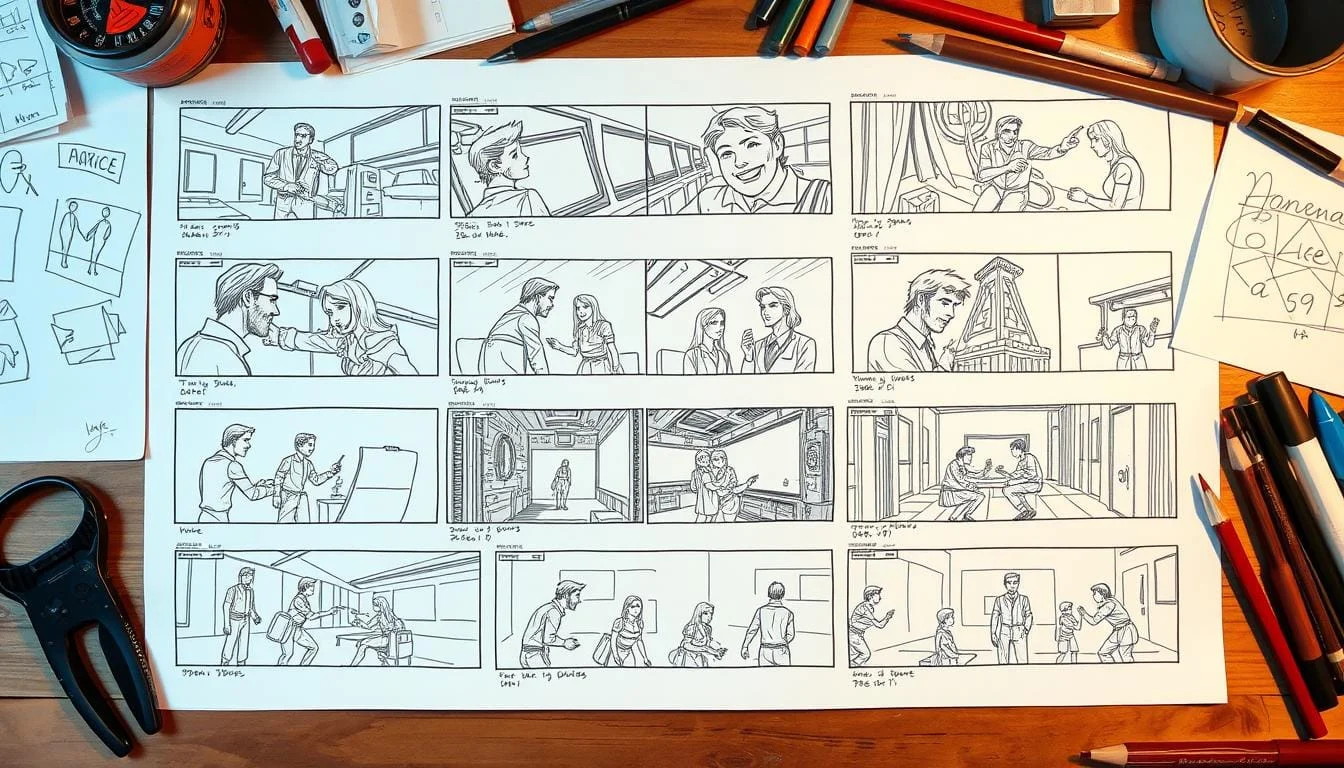
Camera Angles and Movements
Indicate different camera angles and movements in your storyboard. This could be from wide shots to close-ups, or from simple pans to complex tracking shots. These choices affect how viewers see the scene and connect with characters.
Scene Transitions
Show how scenes move from one to another. Smooth transitions are key to keeping your story’s rhythm. They can be simple cuts or more complex, like dissolves, to set the mood.
| Element | Impact on Production | Viewer Engagement |
|---|---|---|
| Visual Sketches | 87% improved pre-production | High |
| Scene Descriptions | 92% better team communication | Medium |
| Storyboard Flow | 80% higher viewer engagement | Very High |
Remember, a well-made storyboard is your guide to creating engaging visual content. Need help making your vision come to life? Hire a skilled storyboard artist on Fiverr to take your project to the next level.
Types of Storyboards in Modern Filmmaking
Modern filmmaking uses many storyboard types to bring ideas to life. Traditional storyboards, made with pen and paper, are loved for their simplicity. They are great for beginners and early ideas.

Digital storyboarding is becoming more popular. It lets you edit and scale drawings easily in software. Filmmakers like it for its flexibility and cost.
Animatics, or animated storyboards, add motion and timing to scenes. They’re great for scenes with lots of movement or visual effects. The demand for animated storyboarding is growing fast, expected to reach $302 million by 2029.
Other types include thumbnail storyboards for quick scene mapping, sketched storyboards for brainstorming, and written storyboards for focusing on the story. Each has its own role in filmmaking.
| Storyboard Type | Key Feature | Best Used For |
|---|---|---|
| Traditional | Hand-drawn | Basic concepts |
| Digital | Easy editing | Detailed planning |
| Animatics | Motion and timing | Complex scenes |
Whether you like traditional methods or modern digital tools, picking the right storyboard type helps your production. Need help with your project? Hire a professional storyboard artist to make it better.
The Role of Storyboards in Visual Storytelling
Storyboards are key in filmmaking. They turn scripts into visual guides for the team. Walt Disney Studios started this in the 1930s. It’s now vital for making great movies.
Narrative Development
Storyboards bring scripts to life. Filmmakers use them to try out different ways to tell a story. It’s like composing music, arranging scenes to flow smoothly.
Emotional Impact
A good storyboard captures the heart of each scene. It helps actors, camera people, and editors create moments that touch viewers. This planning ensures every frame adds to the film’s emotional journey.
Scene Flow and Pacing
Storyboards are key for managing how scenes flow and how fast they go. They help directors plan how scenes will connect and how long shots will last. This planning makes the movie smooth and keeps viewers interested.
| Storyboard Element | Impact on Visual Storytelling |
|---|---|
| Shot Composition | Enhances visual narrative through framing |
| Character Expressions | Conveys emotions without dialogue |
| Scene Transitions | Maintains story flow and pacing |
Ready to bring your visual story to life? Hire a professional storyboard artist to elevate your next project.
Digital Tools and Software for Storyboarding
In today’s filmmaking world, digital tools have changed the storyboarding game. They offer flexibility and easy changes, key for today’s filmmakers.
Storyboarding software ranges from simple apps to complex platforms. Many tools let teams work together in real-time, boosting pre-production efficiency.
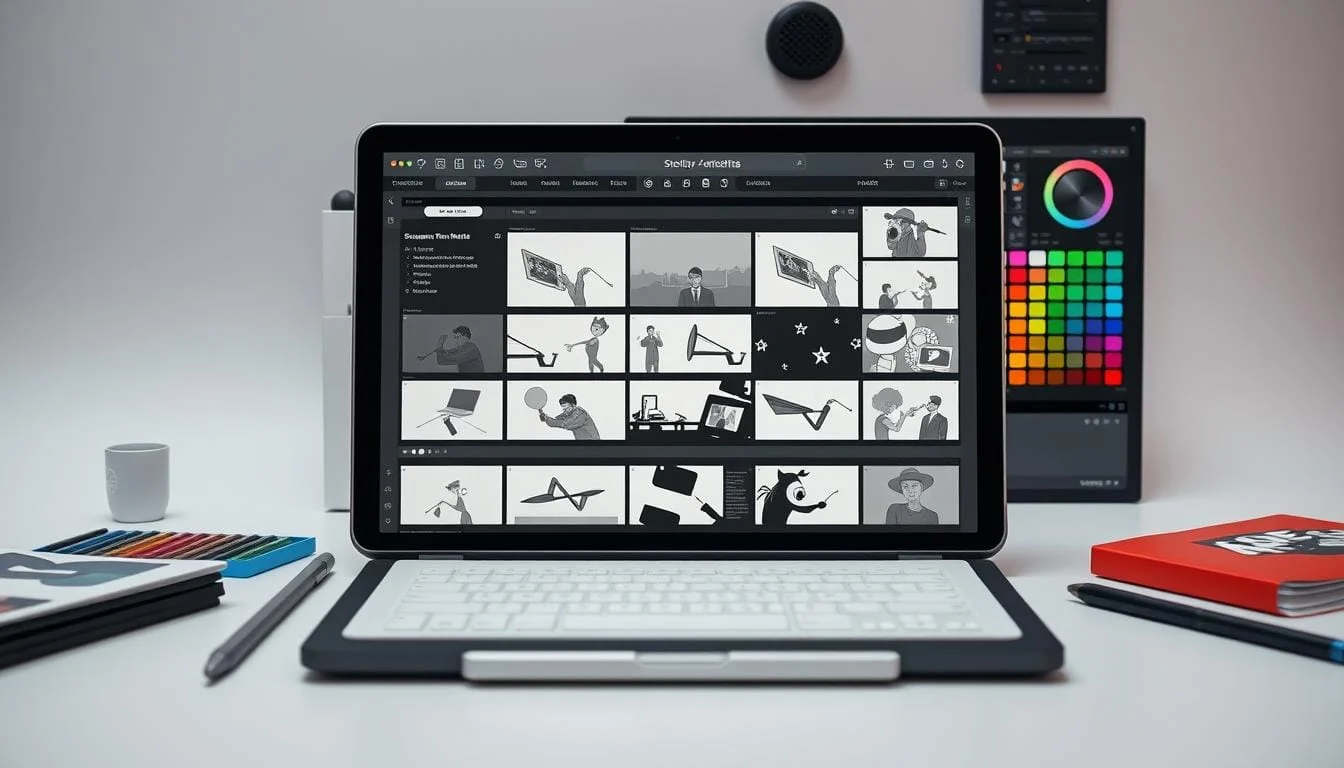
- FrameForge: Offers Core and Pro editions with monthly subscription options
- Storyboarder: A free tool for basic storyboarding needs
- Boords: Provides collaborative features starting at $36/month for three users
- Plot: An affordable option starting at $10/month
- StudioBinder: Offers plans ranging from $29 to $99 per month
These platforms make it easy for teams to share, edit, and tweak storyboards. With digital tools, organizing scenes, adding shot details, and planning your project layout is a breeze.
| Software | Key Features | Price |
|---|---|---|
| FrameForge | Camera movement simulation, 3D sets | $12.99-$25.99/month |
| Storyboarder | Basic drawing tools, free to use | Free |
| Boords | Real-time collaboration, version control | $36-$120/month |
| StudioBinder | Production management integration | $29-$99/month |
Using these digital tools can make your storyboarding smoother and team work better. Ready to improve your pre-production? Hire a skilled storyboard artist on Fiverr to make your vision come to life.
How Storyboards Enhance Team Collaboration
Storyboards are key in bringing teams together in filmmaking. They act as a visual guide, helping all departments work as one. This ensures everyone is on the same page from start to finish.
Communication Between Departments
Storyboards are like a common language in film. They connect directors, cinematographers, set designers, and actors. By showing scenes visually, they prevent confusion and keep everyone focused on the director’s vision.
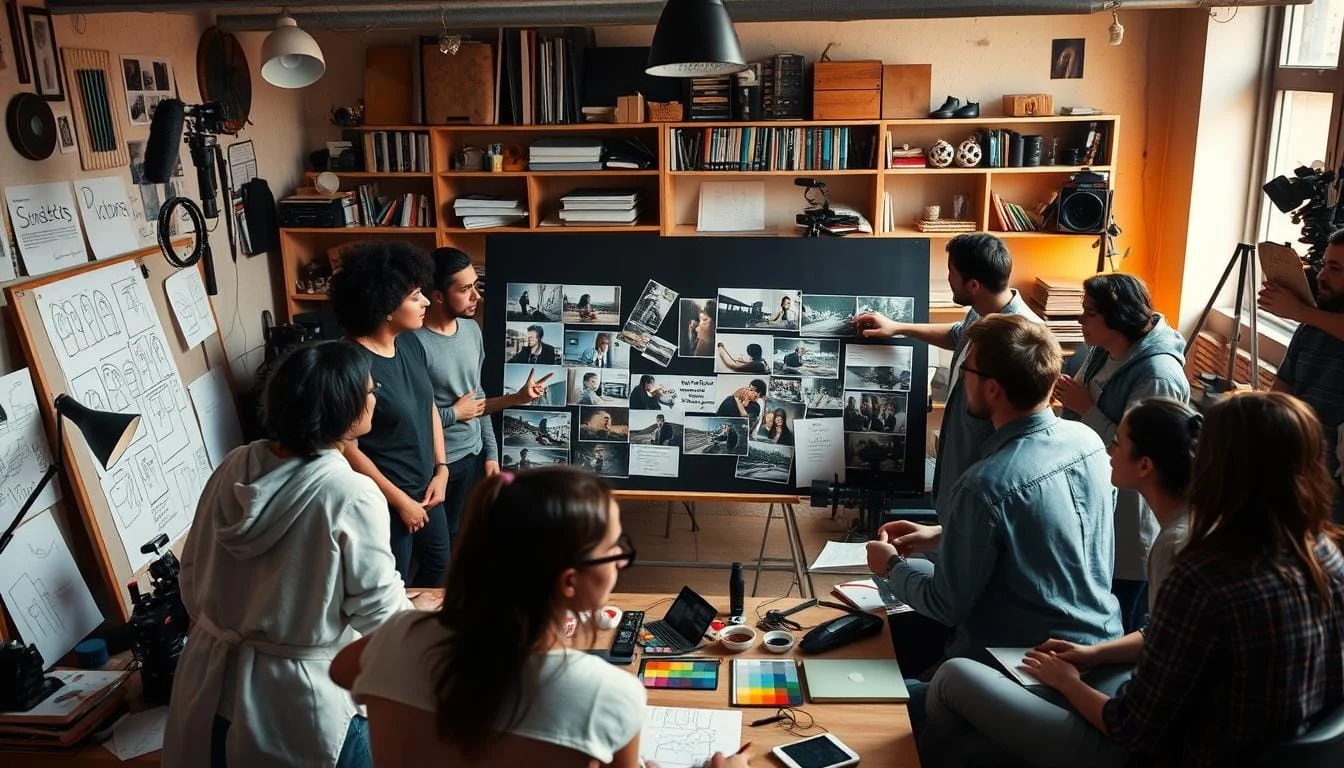
Problem Solving in Pre-Production
In pre-production, storyboards help spot issues before they cost a lot. Teams can find out about logistical and technical problems early. This saves time and money when filming starts.
Creative Input Management
Storyboards are where teams share their creative ideas. They make brainstorming easier, letting everyone see their ideas quickly. This way, everyone’s input is heard and used in the final product.
| Aspect | Impact on Collaboration |
|---|---|
| Visual Communication | Reduces misunderstandings by 40% |
| Problem Identification | Cuts production delays by 30% |
| Creative Input | Increases team engagement by 50% |
Using storyboards can greatly improve team work and make filmmaking smoother. For top-notch storyboard help, consider hiring a skilled freelancer. They can take your project to the next level.
From Script to Screen: The Storyboarding Process
Turning a script into a visual masterpiece begins with script analysis. You’ll dissect the screenplay, pinpointing key scenes and moments. These are the elements that make the story come alive. This step is key to creating detailed visual representations of each scene.

In pre-production planning, artists sketch out these scenes. They think about camera angles, character positions, and set designs. They use different aspect ratios for different projects:
- 16:9 for TV and online videos
- 1.85:1 for film dramas and comedies
- 2.39:1 for action epics
Each storyboard panel shows a specific shot type, like close-ups or wide shots. Artists label these shots with numbers, using variations like 1A, 1B, 1C for multiple boards of the same shot.
“Storyboards serve as the skeletal basis of a scene’s structure, even during the writing phase.” notes filmmaker Terry Gilliam.
The storyboarding process involves constant review and revision. Directors and cinematographers give feedback, making the visual representation better. This teamwork helps bridge the gap between script and screen. It guides everything from set design to actor performances.
Need help bringing your script to life? Hire a professional storyboard artist to start your pre-production planning today.
Case Studies: Successful Storyboard Implementation
Explore film production case studies and see how storyboards have made movies great. You’ll learn from examples that show the importance of planning before filming starts.
Notable Film Examples
Alfred Hitchcock’s “Psycho” (1960) is a great example of storyboarding. The famous shower scene was planned in detail, making it unforgettable. Then, “Mad Max: Fury Road” (2015) used storyboards for its action scenes, making the movie look amazing.
“Toy Story” (1995) showed how storyboards helped solve animation problems. The Pixar team used them to figure out character movements and expressions. This led to a new era in animated films.
Lessons Learned
These stories teach us the value of planning with visuals. Storyboarding helps filmmakers try out ideas, save time and money, and keep everyone on the same page. By looking at these examples, you can learn how to improve your storytelling and make production smoother.
Want to make your movie vision come true? Hire skilled storyboard artists on Fiverr to start your project today.
FAQ:
For the topic “What is Storyboard and Why is it Important? | Using Storyboards Filmmaking”
Q: What is a storyboard and how is it used in video production?
A: A storyboard is a visual representation of a film or video sequence, typically consisting of a series of illustrations or images. In video production, it serves as a crucial pre-production tool to plan out scenes, camera angles, and shot sequences. Storyboards help filmmakers visualize their ideas and create a roadmap for the production process, making it easier to execute their vision and communicate with the entire team.
Q: Why is creating a storyboard important in the pre-production process?
A: Creating a storyboard is pivotal in the pre-production phase as it helps filmmakers refine their ideas, plan shots, and identify potential problems before filming begins. It serves as a blueprint for the entire production, allowing directors, cinematographers, and other team members to align their vision. Storyboards also facilitate better communication with stakeholders, save time and resources during filming, and contribute to a more seamless production process.
Q: How do storyboards help in visualizing the sequence of events in a film?
A: Storyboards provide a visual aid that illustrates how the story will unfold on screen. By showcasing the sequence of events through a series of images, filmmakers can better understand the flow of their narrative, plan camera positioning, and determine the best ways to transition between scenes. This visual representation helps ensure that the story goes as planned and allows for adjustments before the actual filming begins.
Q: What is the typical storyboard format used in video production?
A: The storyboard format typically consists of a series of panels, each representing a key shot or scene in the video. Each panel usually includes a sketch or illustration of the scene, along with notes about camera movements, dialogue, and other important details. Some storyboards may also include arrows to indicate movement or action. The level of detail can vary, from simple stick figures to more elaborate illustrations, depending on the project’s needs and the artist’s style.
Q: Do I need to be an artist or animator to create a storyboard?
A: No, you don’t need to be an professional artist or animator to create a storyboard. While artistic skills can be helpful, the primary purpose of a storyboard is to communicate ideas clearly. Many successful storyboards have been created using simple stick figures or basic shapes. What matters most is that the storyboard serves its purpose in conveying the planned shots and sequence of events. There are also digital tools and software available that can help non-artists create effective storyboards.
Q: How do storyboards relate to shot lists in video production plan?
A: Storyboards and shot lists are complementary tools in video production. While a storyboard provides a visual representation of each scene, a shot list is a written document that details every shot required for the production. Storyboards often inform the creation of shot lists, helping to break down the visual narrative into specific camera setups. Together, these tools create a comprehensive production plan that guides the filming process and ensures all necessary footage is captured.
Q: Can storyboards be useful in post-production?
A: Yes, storyboards can be invaluable in the post-production phase. They serve as a reference point for editors, helping them understand the original vision for the project. Storyboards can guide the editing process, ensuring that the final cut aligns with the intended sequence and pacing of scenes. They can also be useful when working on visual effects, as they provide a blueprint for how CGI elements should be integrated into live-action footage.
Q: How have storyboards been used in famous films and animations?
A: Storyboards have been used in many blockbuster films throughout cinema history. For example, Alfred Hitchcock was known for his detailed storyboards, which he used to meticulously plan his iconic scenes. More recently, animation studios like Pixar have made extensive use of storyboards to develop their films. In the world of live-action, directors like Martin Scorsese and Ridley Scott are known for their comprehensive storyboarding processes, which help them achieve their distinct visual styles.
Source Links
- Commercial: Crafting an effective commercial requires a strategic approach. Let’s get started by creating a cinematic storyboard that captures your brand’s essence.
- The original storyboards are crucial, as they provide a roadmap for the entire production process.
- The storyboard remains the foundation for any successful commercial production.
- Doesn’t matter your experience level – here’s how we can leverage proven techniques used today to help identify potential issues and deliver a polished final product.
- By meticulously planning every single scene, we can anticipate and address any problems that arise in the video production world. This attention to detail will also make the process feel second nature.
- Reviewing related posts from video creatives can provide valuable insights to also become more efficient and effective.
- What Is A Storyboard & How Do You Create One? (With Video)
- What Is A Storyboard? Importance, Benefits and Tools
- How To Make A Storyboard: Essential Tips & Formats – Venngage
- 5 Key Elements Every Storyboard Should Include – Storyboard Hero
- What is a Storyboard and How Can You Use it in Your Marketing Strategy? | Mailchimp
- Storyboards Help Visualize UX Ideas
- How can you encourage team members to share their ideas and improve the storyboard?
- Best Storyboard Examples for eLearning Success
Our Partners: CSKDesignCrafts.com – FitFusioHub.com – LifeCraftsCentre.com
This post contains affiliate links, which means I may earn a commission if you make a purchase through these links. There is no additional charge to you! Thank you for supporting my blog so I can continue creating free content each week!


